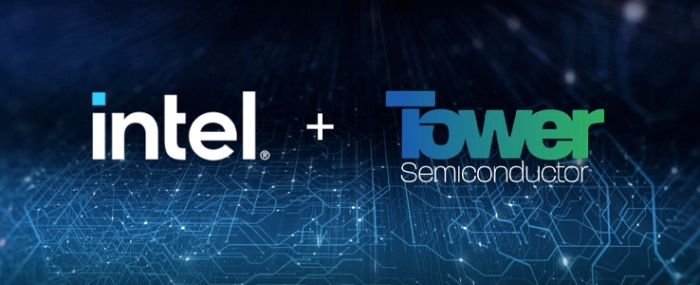
What does Intel gain from acquiring Tower? – Quite a lot
On February 15, Intel officially confirmed that it will acquire Tower Semiconductor, the industry’s ninth largest foundry, for USD 5.4 billion. But, what kind of capacity gain comes with acquiring the ninth biggest player in the field?
As previously stated, the deal will likely contribute to the growth of Intel’s foundry business should it successfully be completed – that kind of goes without saying considering Towers place in the rankings.
Numerous articles, both here at Evertiq and elsewhere, have stated that Tower operates a total of seven production sites across Israel, the US, and Japan. And that the company’s foundry capacity in 300mm wafer equivalents accounts for about 3% of the global total. The majority share of Tower’s foundry capacity is however dedicated for 8-inch wafers, and Tower’s share of the global 200mm wafer foundry capacity is around 6.2%.
But in pure wafer output, exactly what kind of capacity is Intel actually getting their hand on? First lets break down the aforementioned info a bit further. Tower has four wholly owned and three majority owned fab sites. The company’s wholly owned fabs include 150mm and 200mm fabs in Israel, a 200mm fab in Newport Beach, California, originally known as Jazz Semiconductor, and a 200mm fab in San Antonio, Texas, acquired from Maxim Integrated in 2016.
Besides that the company also has a partnership with STMicroelectronics to share the cleanroom space in a new 300mm fab ST is opening later this year in Italy, as previously reported by Evertiq.
Based on data compiled for Knometa Research’s new Global Wafer Capacity 2022 report, Intel will gain access to five 200mm wafer fabs with a combined capacity of 162,000 wafers per month: two 300mm wafer fabs with a combined capacity of 52,000 wafers per month (Tower will get 1/3 of the capacity at the ST JV fab); as well as one 150mm fab with a capacity of 20,000 wafers per month.
Looking at the data provided by Knometa, we see that Intel will gain additional US foundry capacity of 54,000 wafers per month. The US chipmaker will also add foundry capacity of 63,000 wafers per month (150mm and 200mm combined) in Israel. In Japan the acquisition will provide Intel with an additional capacity of about 85,000 (200mm and 300mm combined) wafers per month.
For the Japanese capacity it is worth pointing out that Tower became the majority owner of three former Panasonic fab sites in Japan back in 2014. In September 2020, Nuvoton acquired Panasonic’s chip business, including the 49% ownership positions in the joint venture fab operations now known as Tower Partners Semiconductor Co. (TPSCo) – which means that these are still operated as joint venture fabs.
Knometa Research has listed both the capacity and product focus of each fab as presented in the tables below.
| Fab Name and Location | Wafer | Products | Capacity |
| Fab 1 – Migdal Haemek, Israel | 150mm | Foundry for CIS, MCUs, analog, RF, and mixed-signal ICs, discretes, sensors | 20,000 wpm |
| Fab 2 – Migdal Haemek, Israel | 200mm | Foundry for CMOS logic, CIS, MCUs, power ICs, power discretes, RF analog, sensors | 43,000 wpm |
| Fab 3 – Newport Beach, California, USA | 200mm | Foundry for analog, mixed-signal, RF, high voltage ICs, sensors, silicon photonics | 24,000 wpm |
| Fab 9 – San Antonio, Texas, USA | 200mm | Foundry for power ICs and discretes, RF analog | 30,000 wpm |
| Fab Name and Location | Wafer | Products | Capacity |
| Fab 5 – Tonami, Toyama, Japan | 200mm | Foundry for analog, power discretes, NV memory, CCD | 51,000 wpm |
| Fab 6 – Arai, Niigata, Japan | 200mm | Foundry for analog ICs, CIS | 14,000 wpm |
| Fab 7 – Uozu, Toyama, Japan | 300mm | Foundry for analog, logic, CIS, RF analog, power mgmt | 20,000 wpm |
| Fab Name and Location | Wafer | Products | Capacity |
| grate R3 – Agrate Brianza, Italy | 300mm | Mixed-signal ICs, IGBTs, MOSFETs, RF, foundry | 32,000 wpm (max capacity) |
At the time of the announcement, Intel said that it expects to close the transaction in about 12 months and that it has already been unanimously approved by Intel’s and Tower’s boards of directors. In late April, at its extraordinary general meeting, the shareholders of Tower Semiconductor voted to approve Intel's acquisition of the foundry.
